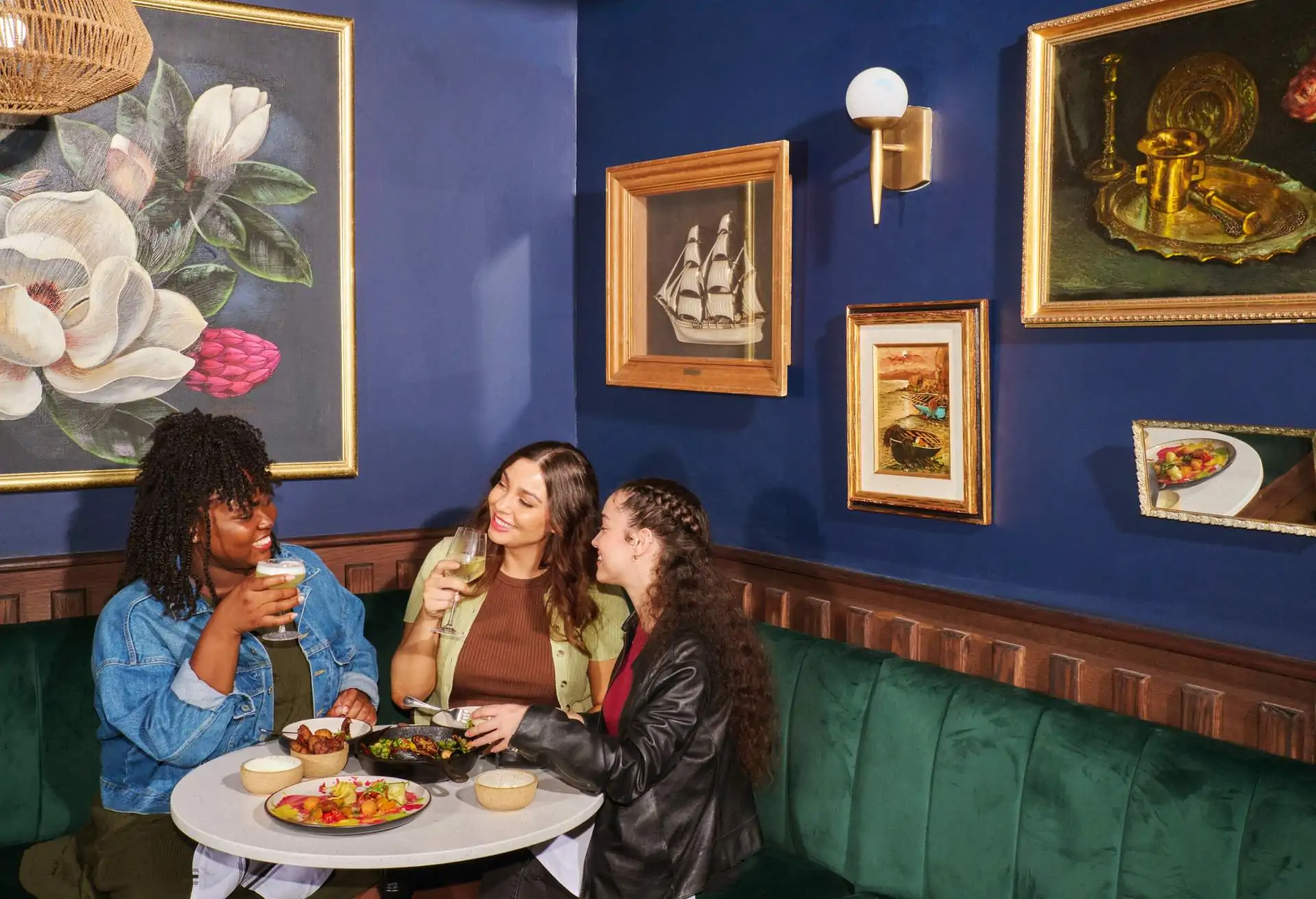Restaurant branding is more than a clever logo and a slick website. A strong brand tells people who you are, what’s important to you, and what they can expect from a visit to your restaurant. Done well, building a brand creates an emotional connection with guests before they step foot in a restaurant and builds long-term loyalty that keeps them coming back.
Quick Links:
What is restaurant branding?
What are the elements of a restaurant brand?
How to build a restaurant brand
Evolving a restaurant brand
What is restaurant branding?
A business’s branding communicates its personality, mission, and values to the world. A strong brand identity will be consistent across all parts of the business, from the business’s name to the dining room decor to any social media presence.
Restaurant branding is even more important today because the hospitality industry is highly competitive. With so many options to choose from, guests pick restaurants that stand out from the pack. A well-established restaurant brand can create return customers and encourage them to sing your praises to others.
If there are a dozen pizza restaurants in the area, you’ve got to communicate why hungry customers should choose your pizza—and make them feel great about making that choice. A thoughtful, intentional restaurant brand, coupled with great food and outstanding hospitality, is how to do it.

What are the elements of a restaurant brand?
A compelling restaurant brand is more than a name and a logo. Your brand is the basis for all the decisions you make. It’s a reminder of the mission and values that drive your restaurant. Together, all the pieces of the puzzle communicate what you’re about and influence how customers will perceive and remember you.
Name
A restaurant’s name is often the first thing customers will know about it—and it’s possibly the most important when it comes to branding. A name should tell people something specific about the food, the ambiance, the service, and the story behind the business.
For new or aspiring restaurant owners, choosing a name can feel like the moment your dreams coalesce into one winning concept.
Logo
A restaurant logo is a visual representation of what makes your brand special. It should be distinctive and easy to recognize while still in line with your brand identity.
Colors
Colors can evoke powerful emotions, whether on your restaurant website, logo, signage, or decor. Choose a color palette that creates an emotional response in customers and supports the personality you want your brand to express.

Design
Design brings brand visuals together in one appealing package to use throughout your business. That includes interior elements like menu design and signage as well as your online presence. Be consistent with design across the different aspects of your restaurant.
Voice
Brand voice is how your restaurant communicates with the world in words. It comes through in the tone, style, and character of the language your restaurant uses with customers. A strong, consistent brand voice can help build loyalty and inspire repeat visits as guests get to know it.
Use your brand voice during both in-person interactions between staff and guests at your restaurant and in the digital world. Train the team on how you want them to speak with guests and each other to establish what this sounds like.
Brand voice also extends to the persona of your social media posts, the way you respond to online reviews, and the voice you use in marketing emails.
You can get creative with your restaurant’s brand voice as long as it speaks to your target customer and works with your brand identity. For example, a server at an old-school diner communicates with customers differently than one at a century-old steakhouse or trendy natural wine bar.

How to build a restaurant brand to inspire guest loyalty
As you develop a restaurant brand, keep the focus on your guests to help guide you through tough decisions. Centering the guest experience can also shape how you write your restaurant’s menu, market your restaurant, and create a dining experience that builds loyalty with your guests.
Mission statement
Defining your restaurant’s mission can help guide you through decisions big and small, from business planning to menu items to pricing.
A mission statement captures your restaurant’s purpose, values, and goals in a few sentences. You can also think about it as your business’s value proposition—the reason guests should visit your restaurant instead of any number of others.
Defining what your restaurant offers and what’s important to you is essential to create a strong restaurant brand. Your mission statement serves as a reminder of why the restaurant exists, its brand identity, and what it offers to customers that other restaurants can’t.
Positioning a restaurant brand in the market
Consider the 4 Ps of marketing: price, product, promotion, and place. Positioning your brand in a crowded market involves defining those elements of your business in relation to other restaurants. You’ll decide the first two, price and product, as you develop your menu.
Build the menu
The food you serve should reflect your restaurant’s mission and brand. If sustainability is a central part of your mission, for example, your menu could include dishes designed to minimize food waste.
Figuring out what to charge for restaurant menu items can be tough, but pricing strategies can help you find that sweet spot that appeals to customers and hits the right profit margin.
Set a marketing strategy
Your restaurant’s marketing strategy is based on the last two Ps: promotion and place. Defining your customer base and your unique value proposition can help you create effective marketing strategies.
Choosing the right marketing channels for your brand will help you reach potential customers where they are, whether in print or digital marketing.
Consider a loyalty program
As you’re developing a restaurant brand, it’s easy to focus on how to get customers in the door. But you don’t want to lose sight of how to keep them coming back after that first visit.
Brainstorm loyalty programs to build a strong connection between guests and your restaurant and incentivize repeat visits. Consider traditional points-based programs and “stealth” loyalty programs that use customer data and personalized treatment to make guests feel like VIPs.

Evolving a restaurant brand
The best time to develop your restaurant’s branding is before you open, but even long-established hospitality brands can change over time. As consumer preferences shift, your brand can evolve to make sure you’re appealing to customers, staying relevant, and preparing for the future.
How a restaurant brand can evolve
It’s important to stay true to your restaurant’s brand identity and mission, but experimenting is a great way to find ways to grow and improve.
That can look like trying new ingredients and trends into menus, collaborating with other hospitality businesses, or hosting special events like menu takeovers. See how customers respond to changes, then incorporate what works into your existing brand.
Building your restaurant brand can set your business apart from every other restaurant out there. It’s a powerful tool for cultivating loyal customers who feel an emotional connection to your restaurant.
Keeping your guests at the center of your restaurant’s brand identity is a surefire way to bring new guests in and keep them coming back. Strong branding inspires loyalty, and loyal customers are one of the best ways to ensure long-term success for your business.




